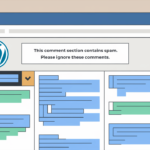Over 40% of the websites around the world use WordPress, and for that very reason, it is the first favorite target of all hackers. The hackers take advantage of unpatched software, poor security settings, and careless users in order to hijack sites. Understanding their methods and how to counteract them is essential for every site owner.
Common Methods Hackers Use to Take Over WordPress Sites
1. Outdated Software
Hackers like hacking into WordPress sites with outdated core files, plugins, or themes. Most updates tend to patch known security vulnerabilities that exist in older versions. Attackers use automated scripts to find such vulnerabilities, through which they gain control over the website or inject malware into it.
Prevention Tips:
- Keep WordPress core, plugins, and themes updated.
- Use a staging environment to test updates before applying them to your live site.
2. Brute-Force Attacks
Brute-force attacks involve automated bots repeatedly guessing username-password combinations. Weak credentials, like “admin” as the username or simple passwords, make sites vulnerable.
Notable Example:
In 2015, Dunkin’ Donuts faced a security breach when hackers exploited weak passwords to access user accounts.
Prevention Tips:
- Use strong, unique passwords for all accounts.
- Limit login attempts using plugins like Wordfence or Limit Login Attempts Reloaded.
- Enable two-factor authentication (2FA).
3. Cross-Site Scripting (XSS)
In XSS attacks, hackers inject malicious scripts into web pages. These scripts execute once users interact with the site, potentially stealing data or enabling unauthorized actions.
Prevention Tips:
- Deploy security plugins that scan and block XSS vulnerabilities.
- Sanitize user inputs and use Content Security Policies (CSP).
4. Session Hijacking
Session hijacking is an attack whereby an attacker intercepts a session ID of any user and accesses his account without having the login credentials. Attackers typically use methods such as session sniffing or cross-site scripting to obtain session cookies.
Prevention Tips:
- Use HTTPS to encrypt data in transmission.
- Use the HTTP Only and Secure attributes for cookies.
- Monitor user sessions for suspect activity regularly.
5. Phishing Attacks
The hackers create fake login pages or impersonate trusted sources to trick users into revealing their credentials. Once they have access, they can compromise the site entirely.
Prevention Tips:
- Educate users to recognize phishing attempts.
- Use reCAPTCHA to prevent automated attacks.
- Monitor email communication for suspicious activities.
6. File Inclusion Exploits
Poorly configured file permissions allow attackers to access sensitive files or execute malicious scripts through directory traversal attacks.
Prevention Tips:
- Restrict file permissions; for example, 644 for files and 755 for folders.
- Do not enable directory browsing on the server.
7. XML-RPC Exploits
The XML-RPC feature in WordPress allows remote procedures but is usually abused for brute-force attacks or DDoS.
Prevention Tips:
- Disable the XML-RPC feature if it is not needed.
- Use plugins such as Disable XML-RPC Pingback to prevent abuse.
Hardening WordPress Security: The Must-Haves

1. Install a Web Application Firewall
The WAF will keep malicious traffic at bay, ensuring none reaches your server. Tools like Sucuri or Cloudflare-one of the top choices-don’t just block attacks but will also boost performance on your site.
2. Change Default Login URLs
The default login pages in WordPress are at /wp-login.php and /wp-admin. Changing this URL further obscures it from the attackers.
3. Security Plugins
Tools like MalCare, Wordfence, and Solid Security (Priously know as iThemes Security) provide other features such as malware scanning, login protection, and real-time alerts.
4. Regular Backups
Perform regular backups for your site. Should your site be hacked, with backups, it can be restored very quickly with minimal loss of data.
5. Monitor User Activity
Audit user activity logs to detect unauthorized access or suspicious actions. Such plugins as WP Activity Log come in handy in such cases.
6. Avoid Nulled Plugins and Themes
The “nulled” versions of the premium plugins have malicious code in them that could be used to provide a backdoor for the hackers. Only download WordPress extensions from trusted sources.
What to Do If Your WordPress Site Gets Hacked
- Enable Maintenance Mode: Block access to the site in order to avoid further damage.
- Scan for Malware: Run tools such as MalCare or Sucuri to scan and detect infected files.
- Reset Passwords: Change all credentials immediately, including WordPress, database, and hosting account credentials.
- Restore from Backup: If the malware is deeply embedded, restoring a clean backup might be the quickest solution. Seek Professional Help: For severe cases, consider hiring WordPress security experts.
The hackers have highly developed methods to exploit WordPress vulnerabilities, but taking proactive measures will significantly reduce the risk. Keeping your WordPress up to date, using strong credentials, and using reliable security tools are just some of the foundations of a secure WordPress site. With vigilance and following best practices, you can protect your website and future-proof it.


